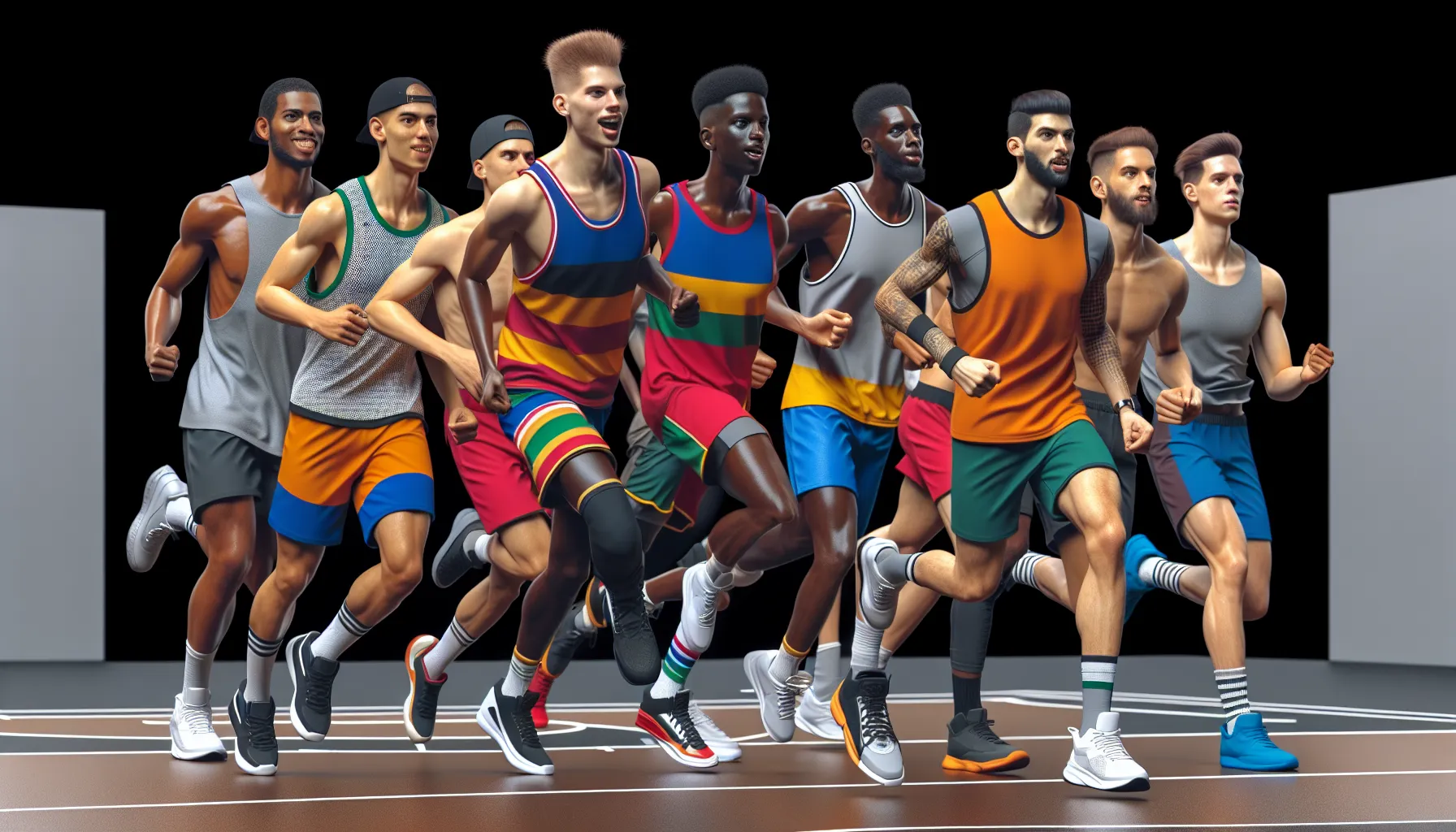Key Takeaways
- Importance of Sports Merchandise: Sports merchandise is essential for fans to connect with their teams, expressing loyalty through items like jerseys, hats, and collectibles.
- Market Growth: The global sports merchandise industry is thriving, generating approximately $30 billion annually, with projected growth to nearly $62 billion by 2035.
- Types of Merchandise: Key categories include apparel (jerseys and sportswear), equipment (gear specific to various sports), and memorabilia (signed items and collectibles) that enhance fan experiences.
- Consumer Trends: Fans increasingly seek personalized and sustainable merchandise, reflecting changing preferences towards eco-friendly products and customized items featuring their favorite athletes.
- Brand Dominance: Major brands like Nike and Adidas lead the market with innovative, high-quality products, while other brands like Under Armour and Puma cater to specific segments with performance-focused and stylish offerings.
- Cultural Impact: Sports merchandise significantly influences fan culture by fostering identity, community, and economic impact, while also serving as a powerful marketing tool for teams and brands.
In the vibrant world of sports, merchandise plays a crucial role in connecting fans with their favorite teams and athletes. From jerseys to hats and memorabilia, these products not only showcase loyalty but also enhance the overall experience of being part of a community. As sporting events draw millions of viewers, the demand for quality merchandise continues to soar.
Sports merchandise isn’t just about fashion; it’s a thriving industry that generates billions in revenue each year. Fans eagerly seek out authentic gear to express their passion and support. As trends evolve, so do the ways fans engage with their teams, making the world of sports merchandise dynamic and ever-changing. Understanding this landscape can help fans make informed choices while also revealing the deeper significance behind their favorite items.
Overview of Sports Merchandise
Sports merchandise encompasses a wide range of products that fans purchase to express their support for teams and athletes. Items such as jerseys, hats, jackets, and collectibles serve as both fashion statements and expressions of loyalty. As of 2023, the global sports merchandise market generates approximately $30 billion annually. This significant revenue highlights the impact and popularity of branded gear.
The evolution of sports merchandise reflects changing consumer preferences and technological advances. Personalized items, such as custom jerseys featuring a fan’s name or favorite player’s number, have gained traction. Teams leverage e-commerce platforms to enhance accessibility, allowing fans to purchase official merchandise from anywhere at any time. Licensed products, including home decor and fitness gear, further expand options for fans seeking ways to showcase their affiliation.
Trends in sustainable and ethically sourced merchandise are increasingly influencing consumer choices. Many fans prioritize eco-friendly products, such as jerseys made from recycled materials, aligning purchases with values. Additionally, collaborations between sports teams and fashion designers lead to unique collections that appeal to a broader audience, merging sports culture with mainstream fashion.
Promotional events and limited edition releases create excitement within the fan community. Exclusive collectibles, such as autographed memorabilia or championship merchandise, become highly sought after, increasing their value over time. These factors contribute to the dynamic nature of the sports merchandise landscape, prompting teams and retailers to adapt strategies that engage and retain loyal fans.
Types of Sports Merchandise

Various types of sports merchandise cater to fans’ needs and preferences. Each category offers items that enhance the fan experience and showcase loyalty to teams and athletes.
Apparel and Clothing
Apparel and clothing play a significant role in sports merchandise. Items include team jerseys, sports shorts, compression shirts, and tracksuits. These products often feature team logos and branding, creating strong connections with fans. Examples include athletic wear made from moisture-wicking polyester-spandex blends and team sportswear crafted with Dri-FIT polyester and antimicrobial mesh panels. Winter sportswear, featuring PrimaLoft insulation and windproof Thermolite® fleece, caters to seasonal sports enthusiasts. Fans wear these items not only for comfort but also to demonstrate their support.
Equipment and Gear
Equipment and gear encompass a wide array of items essential for various sports. This category includes balls, bats, bikes, and boards, in addition to camping tools, climbing equipment, and first aid kits. Other items include gloves, goal posts, goggles, helmets, and harnesses tailored for specific activities. Lifejackets, racquets, skates, skis, and sleds provide necessary safety and performance features for athletes. Sports professionals and enthusiasts rely on high-quality equipment to enhance performance and achieve their goals, making this segment vital in sports merchandising.
Memorabilia and Collectibles
Memorabilia and collectibles capture the essence of sports fandom by featuring items connected to athletes. Popular items include signed balls, jerseys, and photos, which hold significant value for fans. Vintage sports equipment and unique collectibles, such as stadium seats or premium game programs, appeal to both fans and collectors alike. These timeless pieces not only represent cherished memories but also serve as investments, often increasing in value over time. Collecting memorabilia allows fans to connect more deeply with their favorite teams and athletes, making it an essential aspect of sports culture.
Popular Brands in Sports Merchandise

Top brands dominate the sports merchandise market, known for their quality and appeal. Among them, Nike and Adidas stand out prominently.
Nike and Adidas
Nike leads the sports merchandise industry, holding the top position in both men’s and women’s categories. It excels in product innovation and marketing, creating a strong global presence. Adidas ranks closely behind, recognized for its stylish designs and performance-oriented products. Both brands consistently generate billions in revenue, contributing to the estimated $30 billion sports merchandise industry. As they adapt to changing consumer preferences through sustainable practices, Nike and Adidas maintain significant brand loyalty among fans.
Under Armour and Puma
Under Armour focuses on performance-based sports merchandise, specializing in moisture-wicking fabrics and functional apparel that support athletes. It appeals to serious sports enthusiasts seeking high-quality gear. Puma, on the other hand, offers a diverse array of sports and lifestyle products, merging fashion with functionality. Both brands showcase their offerings through strategic partnerships with athletes and teams, enhancing their visibility. While market shares differ, Under Armour and Puma remain influential in shaping trends and capturing specific demographic segments within the sports market.
The Impact of Sports Merchandise on Fan Culture
Sports merchandise significantly influences fan culture by solidifying identity and fostering community.
- Identity Formation: Merchandise such as jerseys, hats, and collectibles allows fans to express their loyalty to teams or athletes. By showcasing these items, fans become recognizable members of a larger fan community, reinforcing their allegiance through visible symbols of support.
- Community Building: Owning and wearing team-related products creates connections among fans with shared interests. Engagement with merchandise cultivates a sense of belonging, whether through online platforms or local fan gatherings. Fans often bond over discussions about their favorite gear, deepening interpersonal relationships within the community.
- Economic Influence: The sports merchandise industry generates approximately $30 billion annually, reflecting its vital role in the broader economy. Merchandise sales provide substantial revenue streams for teams, enabling them to invest in future player acquisitions and community programs.
- Marketing Strategies: Merchandise serves as a robust marketing tool, prominently featuring team logos and colors. Brands utilize sports figures to endorse products, amplifying reach through influencer marketing strategies. This quality of merchandise often becomes synonymous with brand identity, increasing overall consumer loyalty.
- Behavioral Influence: Social media plays a pivotal role in shaping consumer behavior regarding merchandise. Fans’ enthusiasm for player updates often results in impulsive buying actions, driven by curiosity and engagement with their favorite teams. Platforms like Instagram and Twitter create environments where teams can directly engage fans, influencing purchasing decisions.
The interplay of identity, community, economics, and marketing demonstrates the profound impact of sports merchandise on fan culture, establishing enduring relationships between fans and their chosen teams.
Trends in the Sports Merchandise Industry
Market Growth and Outlook
Licensed sports merchandise shows significant market growth, projected to reach approximately $38,646 million by 2025 and $61,174.7 million by 2035, reflecting a CAGR of 4.7% during the forecast period. An alternative estimate indicates the market might hit $37.51 billion in 2025, growing to $48.49 billion by 2030 at a CAGR of 5.27%.
Key Drivers
- Global Fan Engagement: Rising fan engagement emerges primarily from sports leagues and enhanced by social media interactions and celebrity endorsements.
- Sports Participation: Increased participation in sports, fueled by health consciousness and entertainment value, significantly influences merchandise demand.
- E-commerce and Technology: The growth of e-commerce platforms and advancements in fabric technology facilitate market expansion, improving accessibility and variety.
Market Segments
- Top Countries: The USA, China, Germany, the UK, and Japan rank as the leading contributors to the licensed sports merchandise market.
- Product Categories: Sports apparel, along with sweatshirts and hoodies, is poised to dominate market share, aligning with consumer preferences for comfort and style.
Consumer Behavior
Consumers exhibit a strong preference for authentic team merchandise. This demand reflects the appeal of sports as a source of entertainment and a crucial aspect of personal identity. As fans seek genuine products, purchasing decisions increasingly lean toward licensed merchandise rooted in team loyalty.
Conclusion
Sports merchandise plays a pivotal role in shaping fan culture and community engagement. As the industry continues to evolve with trends and technology, fans find new ways to express their loyalty and connect with each other. The growing demand for personalized and sustainable products reflects a shift in consumer values, driving teams and brands to adapt their offerings.
With the market projected to reach unprecedented heights in the coming years, it’s clear that sports merchandise isn’t just about products; it’s about identity and belonging. As fans navigate this dynamic landscape, their choices will undoubtedly influence the future of sports merchandise, creating lasting connections with their favorite teams and athletes.
Frequently Asked Questions
What is the role of sports merchandise in fan culture?
Sports merchandise helps fans connect with their favorite teams and athletes, showcasing loyalty and fostering a sense of community among supporters. It serves as an expression of identity and enhances the overall fan experience.
How much does the sports merchandise industry earn annually?
The sports merchandise industry generates approximately $30 billion each year, reflecting strong demand for authentic gear as fans express their passion for their teams.
What types of items are considered sports merchandise?
Sports merchandise includes apparel like jerseys and hats, equipment such as balls and protective gear, and memorabilia, including signed items and collectibles, each serving different fan needs and preferences.
How is technology influencing sports merchandise?
E-commerce platforms have made it easier for fans to access sports merchandise. Personalized items and sustainable products are gaining popularity, reflecting changing consumer preferences and technological advancements.
Which brands dominate the sports merchandise market?
Nike and Adidas lead the sports merchandise market due to their innovative products and strong global presence. Other notable brands include Under Armour and Puma, each catering to specific market segments.
What trends are shaping the future of sports merchandise?
Significant growth is projected for the sports merchandise market, expected to reach $38.6 billion by 2025 and $61.2 billion by 2035. Key trends include increased fan engagement, technological advancements, and the rising popularity of eco-friendly products.
How does sports merchandise impact the economy?
The sports merchandise industry generates revenue for teams, allowing them to invest in player acquisitions and community programs. It also creates jobs and stimulates local economies through fan engagement and events.
Why are limited edition items popular among fans?
Limited edition items generate excitement and exclusivity among fans, making them highly sought after. These collectibles often appreciate in value over time, deepening their significance for fans and collectors alike.
